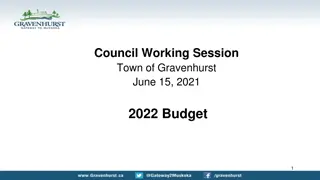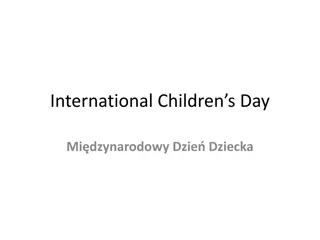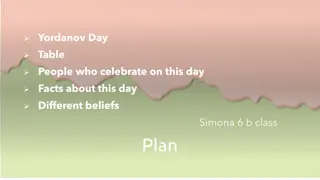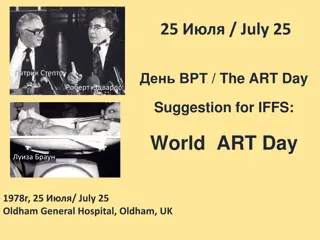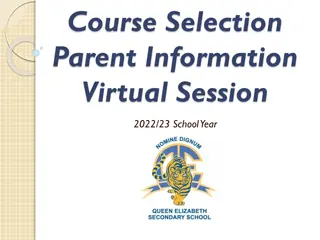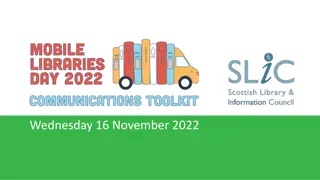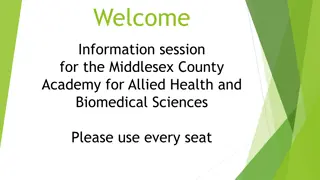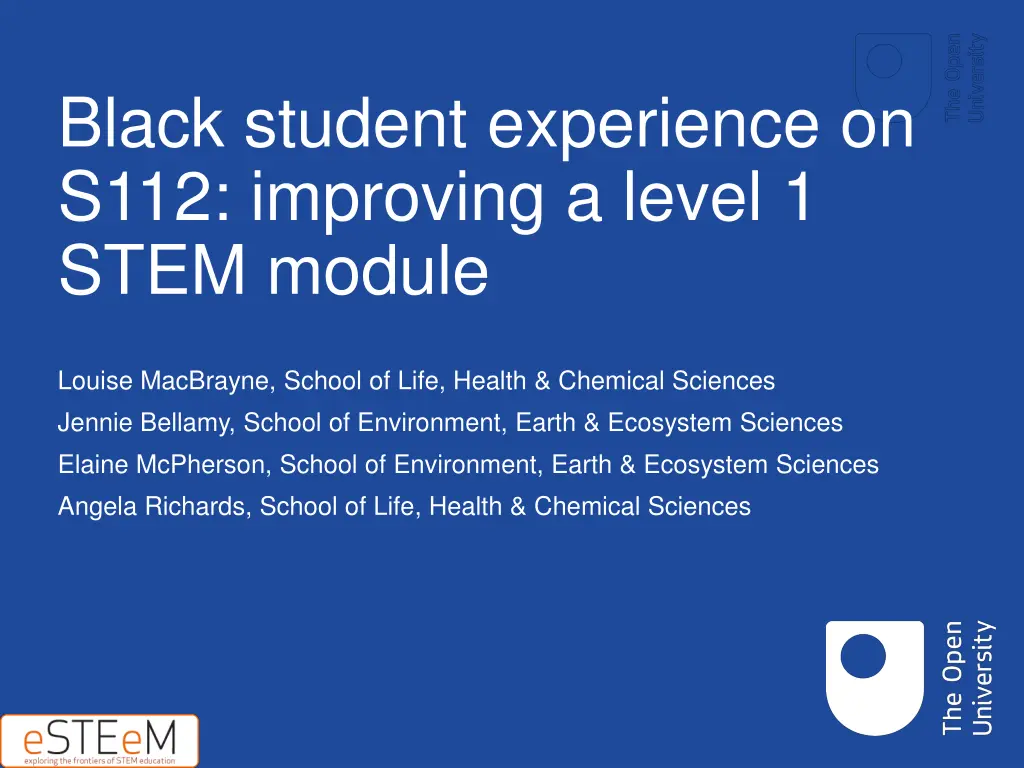
Improving Black Student Experience in STEM Module S112
Enhance Black student experience in a level 1 STEM module S112 by addressing issues, raising awareness, and adapting tuition practices. Research aims to understand needs, barriers, and outcomes faced by Black students to implement effective interventions for better success.
Download Presentation

Please find below an Image/Link to download the presentation.
The content on the website is provided AS IS for your information and personal use only. It may not be sold, licensed, or shared on other websites without obtaining consent from the author. If you encounter any issues during the download, it is possible that the publisher has removed the file from their server.
You are allowed to download the files provided on this website for personal or commercial use, subject to the condition that they are used lawfully. All files are the property of their respective owners.
The content on the website is provided AS IS for your information and personal use only. It may not be sold, licensed, or shared on other websites without obtaining consent from the author.
E N D
Presentation Transcript
Black student experience on S112: improving a level 1 STEM module Louise MacBrayne, School of Life, Health & Chemical Sciences Jennie Bellamy, School of Environment, Earth & Ecosystem Sciences Elaine McPherson, School of Environment, Earth & Ecosystem Sciences Angela Richards, School of Life, Health & Chemical Sciences
Project Background S112 Science, Concepts and Practice is an interdisciplinary level one Science module with 2174 registered students (start of 21J) and is compulsory in 16 STEM qualifications (including BSc single honours) and optional in 23 further qualifications. S112 Comparison of Pass Rates: Black vs White Students 80 Preliminary data (17J 19J) for S112 suggested that there is an awarding gap for Black students vs White students on S112 when looking at module pass rate 70 60 Pass Rate 50 40 30 20 10 0 17J 18J 19J 20J Black White 2
Project Aims To develop understanding of issues faced by Black students throughout S112 To raise awareness of these issues amongst staff including tutors, student support staff, and module teams. To consider how S112 tutors could adapt their tuition practice to respond to Black students needs throughout the module presentation To consider module wide modifications and interventions to support and improve Black student experience and success on S112. 3
Research Questions What are the needs of Black students in S112 and possible barriers to their study? What could be influencing the experience and outcomes for Black students in S112? 4
Research Methods AL led online focus groups (Adobe Connect) with current and former Black S112 students (held in December 2021 & to be held later in 2022) centred around the experiences of Black students when studying S112 * Data collection and intersectionality study: exam scores and pass rate across presentations, and other factors including study pattern, employment status, PEQ, socio-economic status (Index of Multiple Deprivation, IMD), caring responsibilities and first in family in Higher Education; analysis of TMA scores, submission rates and extension requests for Black students compared to White students * Note that due to the relatively low numbers of Black students on each presentation of S112 it was decided not to survey students 5
S112 Online Focus Groups: Quotes I ve just learned about white scientists, which is good but it s not equal the experiment it assumed that you had certain things in your house it assumed that you had everything in your house and they don t support you if I see I m not represented in [ ] science, in terms of the professional aspect, my community because I m Caribbean why would I want to continue into that field, its clearly not a place for Black people I mean, some of the tutors really need to either step away or to do some kind of diversity course I think a lot of them need it! I have had to attend a practical project lesson where we all went to the Open University and I was the only Black person 6
S112 Online Focus Groups: Identified Themes Financial challenges associated with the cost of equipment needed for home experiments Sense of Belonging Lack of Black representation throughout the Science curriculum 7
S112 Data Analysis (17J 20J) A data analysis study considered the following intersection comparisons for pass rates: Ethnicity and Index of Multiple Deprivation (IMD) 1 (most deprived)- 5 (least deprived) Ethnicity and gender Ethnicity and parents in HE (first in family into HE) Ethnicity and employment status to be considered Ethnicity and caring responsibilities to be considered Data was also analysed relating to TMAs submissions and TMA extension requests (are Black students more likely to request TMA extensions on S112?) 8
S112 Intersection Comparison: IMD 20J S112 2020-J Pass Rate Intersection Comparison IMD Q1,2 - Q3,4,5 75.0% 72.1% 72.5% 72.1% 70.0% 70.0% 72.1% 68.7% In 20J, Black students in IMD Q1 not apparently double disadvantaged, but are so in Q3, 4 and 5 68.7% 65.0% 64.3% 61.5% 62.3% 61.5% 61.4% 61.4% 60.0% 61.4% 54.5% 55.0% 54.5% 54.3% 50.0% 45.0% 40.0% 37.5% 35.0% Black / IMD Q1,2 Black / IMD Q3,4,5 Asian/ IMD Q1,2 Asian/ IMD Q3,4,5 White/ IMD Q1,2 White/ IMD Q3,4,5 Pass rate intersection at 25% FLP Pass rate for the ethnic group Pass rate for the IMD quintile 9
S112 Intersection Comparison: IMD 19J S112 2019-J Pass Rate Intersection Comparison IMD Q1-Q5 75.0% 73.8% 73.1% 73.1% 70.0% 67.5% 68.5% 68.5% 67.5% 65.0% In 19J, Black students in IMD Q1 are apparently double disadvantaged, not seen in Asian or White students 60.7% 57.2% 57.2% 57.2% 55.0% 50.0% 45.0% 44.0% 35.0% 25.0% 16.7% 15.0% Black / IMD Q1 Asian/ IMD Q1 Asian/ IMD Q5 White/ IMD Q1 White/ IMD Q5 Pass rate intersection at 25% FLP Pass rate for the ethnic group Pass rate for the IMD quintile 10
S112 Intersection Comparison: IMD 18J S112 2018-J Pass Rate Intersection Comparison IMD Q1,2 - Q3,4,5 70.0% 66.4% 66.6% 66.4% 65.0% 63.6% 66.4% 63.3% 63.3% 60.0% 60.0% In 18J, Black students in Q1 are double disadvantaged (and slightly in Q2) but not in Q3, 4 and 5 57.9% 56.7% 56.7% 56.7% 55.0% 54.2% 54.2% 50.0% 46.7% 45.0% 41.2% 41.2% 40.0% Similar trend noted in 17J 35.0% 33.3% 30.0% Black / IMD Q1,2 Pass rate intersection at 25% FLP Black / IMD Q3,4,5 Asian/ IMD Q1,2 Pass rate for the ethnic group Asian/ IMD Q3,4,5 White/ IMD Q1,2 Pass rate for the IMD quintile White/ IMD Q3,4,5 11
S112 Intersection Comparison: Gender S112 2019-J Pass Rate Intersection Comparison Ethnicity - Gender Some data omitted where sample size is zero or one. 90.9% 90.0% 88.9% In 2019J, Black female students are double disadvantaged not seen in other ethnicities 80.0% 76.9% 76.9% 69.9% 70.0% 68.5% 68.5% 67.8% 67.5% 67.5% 60.0% 60.0% 59.2% 59.2% 59.2% 59.2% 59.2% 58.1% Gender balance on S112 is fairly even 50.0% 50.0% 50.0% 50.0% 50.0% 50.0% 44.0% 40.8% 44.0% 40.8% 40.8% 40.8% 40.8% 40.0% 33.3% 30.0% Black Female Black Male Asian Female Asian Male Mixed Female Mixed Male Other Female Other Male White Female White Male Intersection Pass rate Ethnic group Pass rate Gender Pass rate 12
S112 Intersection Comparison: Gender S112 2018-J Pass Rate Intersection Comparison Ethnicity - Gender Some data omitted where sample size is zero or one. 80.0% 75.0% 75.0% In 2018J, Black male students are double disadvantaged not seen in other ethnicities 70.0% 64.0% 65.0% 63.3% 63.4% 63.3% 60.0% 60.0% 57.1% 56.5% 56.5% 56.5% 56.5% 56.5% 55.6% 55.0% 54.5% 54.5% 54.2% 54.2% 54.2% 54.2% 50.0% 50.0% Gender balance on S112 is fairly even 45.0% 43.5% 43.5% 43.5% 43.5% 41.2% 41.2% 40.0% 37.5% 35.0% 30.0% Black Female Black Male Asian Female Asian Male Mixed Female Mixed Male Other Female White Female White Male Ethnic group Pass rate Gender Pass rate Intersection Pass rate 13
S112 Intersection Comparison: First in Family into HE S112 2018-J Pass Rate Intersection Comparison Ethnicity - Parents in HE Some data omitted where sample size is zero or one. 85.0% 80.0% No apparent double disadvantage for Black students being first in family into HE in any presentation (18J shown as an example) 75.0% 70.0% 65.0% 60.0% 55.0% 50.0% 45.0% 40.0% 35.0% Black - Yes Black- No Asian - Yes Asian - No Mixed - Yes Mixed - No Other - No White - Yes White - No Pass rate at intersection Pass rate ethnicity Pass rate Parents in HE 14
S112 Data Analysis (17J 20J) Summary S112 Black students are not apparently double disadvantaged by gender or by being first in family to attend Higher Education However Black students from IMD Q1 do appear to be double disadvantaged in previous presentations of S112 with the exception of 20J The only difference in 20J compared to previous presentations was the differing approach taken for the exam, deliberately written for the online setting 17J and 18J presentations had face to face exam The largest pass rate awarding gap for S112 was in 19J in which the original face to face exam was moved online without modification 15
Further work Focus Groups Thematic analysis of May 2022 focus group transcript and comparison to December 2021 focus group Intersectionality study Will be continued for 21J data when available Will be continued for all presentations for other factors such as employment status and caring responsibilities Module modifications (22J & 23J) S112 is in phase 2 of the inclusive curriculum tool pilot (April 2022) outputs will be used alongside project findings to inform modifications to module content for 23J Explore changes to practical work within S112 to reduce financial burden for students 16
S112 Assessment Background The final module score from S112 results from the following weightings: 39% continuous assessment (6 x TMAs, 3 x 3% and 3 x 10%) 61% exam No thresholds on either component It is not possible to pass S112 without sitting the exam, although it is possible to pass with the exam alone (although unlikely) Intersectional comparisons were performed for ethnicity and pass rate (as opposed to exam score) as this was the best overall representation for success on S112 18
S112 TMA Submissions: 18J Example TMAs Submitted on time 18J 80% Mean length of extension 70% 14 60% 12 50% 10 8 40% 6 30% 4 20% 2 10% 0 TMA01 TMA02 TMA03 TMA04 TMA05 TMA06 0% Black Asian Mixed Other White Black Mean days White Mean days Data from 19J, 18J and 17J shows that S112 Black students are more likely to require an extension than White students, but are less likely to require a longer extension (20J data not made available) However it is not known how many Black students request but are not given an extension or whether Black Students are less likely to ask for an extension 19




